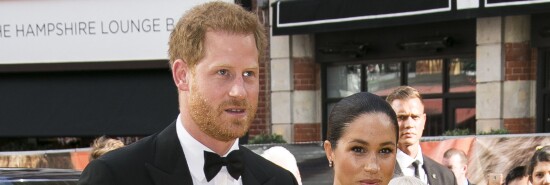
Why Harry’s ‘near catastrophic’ car chase story doesn’t add up
Tom Rogan
Video Embed
A spokesperson for Prince Harry says that he and his wife Meghan suffered a “near catastrophic car chase” in New York City on Tuesday evening. The spokesperson said that the chase was provoked by paparazzi who followed the couple and Meghan’s mother without regard for traffic laws. The implication: Harry’s party narrowly avoided the fate of his mother, Princess Diana, who was killed in a 1997 Paris car crash as she was pursued by the paparazzi.
One problem with Harry’s story?
The NYPD said that while the paparazzi behaved in a “challenging” manner last night, it has no record of a chase or any collisions. But here’s another question: Why did a chase occur in the first place? Why did Harry’s security team, which was either directly or indirectly operating under his authority, attempt to escape the paparazzi rather than maintain normal driving conditions?
KAMALA HARRIS TAKES HER PLACE AT THE DEBT LIMIT NEGOTIATING TABLE
Perhaps the paparazzi were occasionally blocking the couple’s vehicle. Harry’s spokesperson has suggested as much. But if that’s the case, the appropriate response would have been for Harry’s security team to call the NYPD. I understand that Harry’s private security team is extremely well resourced and staffed by former police officers and close protection specialists. Those personnel likely had personal contacts with the NYPD via which they could expedite an effective NYPD response.
Again, the central question must be asked: Why did Harry allow a chase to occur?
Even if, as seems likely, the paparazzi were breaking traffic laws without regard to public safety, that does not mean Harry gets to do the same. On the contrary, vehicle-based close protection tactics suggest that where a lawful escape plan is impossible, or a threat is primarily that of nonviolent crowds (a la paparazzi), the appropriate response is to establish a static defensive position and wait for backup. That might not be preferable for Harry, but it is what the circumstances and the law would seemingly demand.
So, what’s really going on here?
I suspect two things.
First, Harry likely seeks to use this incident to bolster his case for greater privacy against uncomfortable media attention. Harry and Meghan revel in positive media coverage and high-profile engagements such as that which they attended on Tuesday evening. At the same time, they demand protection from the less fun privileges granted to the public by the First Amendment. While Harry and Meghan are highly litigious in their approach to the U.K. media, they cannot apply that same strategy to the U.S. media by virtue of America’s far freer speech laws, laws that Harry has described as “bonkers.”
Second, Harry may well hope that this incident will provide him with an excuse to have his U.S. government Diplomatic Security Service detail restored. That security detail was pulled by the Trump administration following criticism from some, myself included, that a nonactive U.K. royal was being provided an expensive U.S. government protection. The advantage for Harry, however, is that a DSS detail would allow him to move without the need to suffer paparazzi pursuit and pesky traffic laws. Regardless, the already greatly overstretched DSS does not have the resources to support a full-time detail for Harry. Evincing his preference for government-provided security, Harry has engaged in legal action with the U.K. government over its removal of his Metropolitan Police service protection team.
Top line: Whatever Harry says should be judged carefully.
